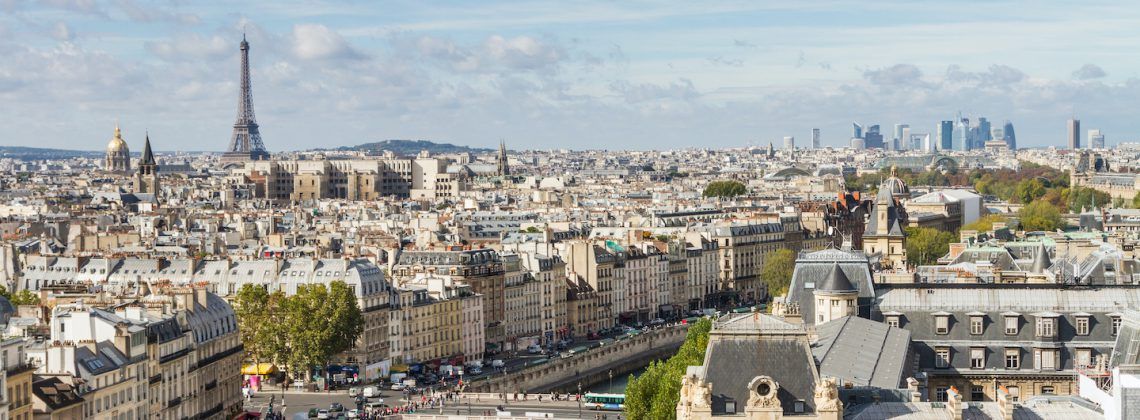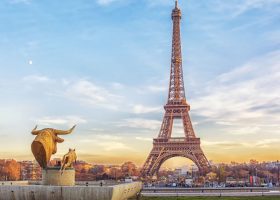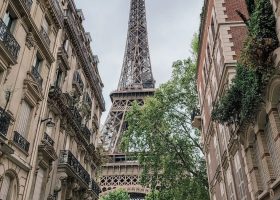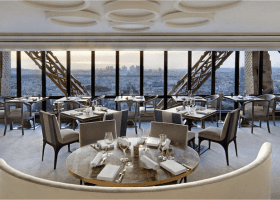Want to learn more about the Eiffel Tower? This article details the history and construction of the century+ old iconic Eiffel Tower.
When you’re done this article check out our page dedicated to the Eiffel Tower in Paris!
History & Construction of the Eiffel Tower
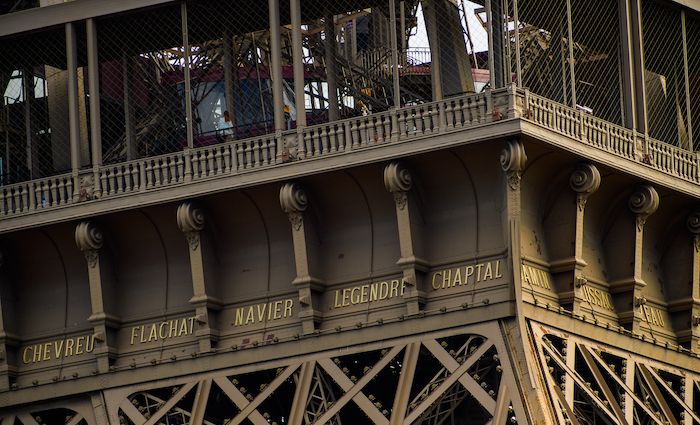
The Eiffel Tower had a rather tedious start on paper. Gustave Eiffel, a French civil engineer and architect, began his career working for a railroad company and his first major work was The Bordeaux bridge. Basically a 1600 ft (500m) sheet Iron bridge that crossed the Garonne river at Bordeaux.
The bridge helped connect Paris to Bordeaux and was in use until it’s destruction in WWII. Gustave’s grandson rebuilt the bridge in 2012. From there he worked on many iron bridges, mainly for trains since he worked for a rail company.
Gustave Eiffel

His first big design work was teh Budapest-Nyugati station in Budapest, Hungary. The best part of this commission was that Eiffel was able to do this on his own books. He set up a company in Paris with Théophile Seyrig, another prominent architect, and started work on the train station which was built as a terminus for a line running from Vienna to Budapest.
The design was much more beautiful and innovative than any of his previous works. It was obvious that he wanted to infuse more metal into structures as he combined it with stone to form a captivating facade for the Budapest-Nyugati station.
Compagnie des Établissements Eiffel

In 1879, Eiffel dissolved his partnership with Seyrig and opened Compagnie des Établissements Eiffel. In 1881 he was contacted by Aguste Bartholdi who asked him to design the engineering side of the Statue of Liberty. He helped design a complex interior skeleton that ensured the statue would hold up under strong wind.
The greatest part is they completely built and erected the statue in France before dismantling it, shipping it to the New York and reassembling it.
Visiting the Eiffel Tower isn’t as easy as learning its history. There are long lines and lots of confusion. All our Eiffel Tower tours include admission and some even include a Seine River cruise with a glass of champagne!
Our Best Guided Tours of Paris
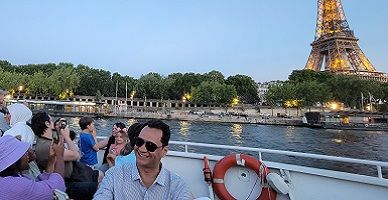
Likely to Sell out
Privileged Access Eiffel Tower Tour with Seine River Cruise
Sometimes the most amazing moments happen by chance. Other times, they are orchestrated by professionals. Our Eiffel tower tour cruises by the famed monument as it lights up and you drink champagne. After, you’ll have tickets to enter the tower and ascend to the 2nd level with an elevator.
See Prices
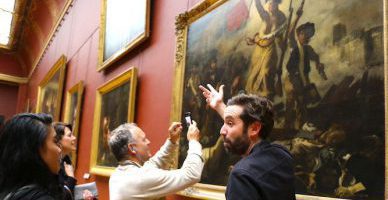
Top Selling
Secrets of the Louvre Museum Tour with Mona Lisa
The Louvre is the largest art museum on Earth and the crowning jewel of Paris. It embodies the French vigor for life. Join a passionate English speaking guide for a tour of the most famous artwork. Skip the line admissions included.
See Prices
The Guys Behind the Guy

While Gustave got the name-credit for the Eiffel Tower, it was designed by two men engineers who worked for him; Émile Nouguier and Maurice Koechlin.
Inspiration for the tower came from Latting Observatory. A pointy wooden structure that existed on 42nd between 5th & 6 avenue in NYC. It was constructed in 1853 for an industrial conference. It was lucky they saw it because it was partly dismantled before burning down three years later in 1856.
Eiffel saw the first drawing of the tower in 1884 but was unimpressed. He knew they were working on something as a pet project to win the bid for the World’s Fair in 1889 so he told them to make some improvements.
A few months later Eiffel presented the design at an art exhibition with mild acceptance. He began politicizing his tower in order to gain the favor of local and national government.
He recieved little traction until 1886 when Jules Grévy, then President of France, announced a competition for a metal structure to be the centerpeice for the World’s Fair. It appeared pretty obvious he was creating a competition geared towards Eiffel’s design to win.
Construction

Tower construction began on Champs de Mars on the 28th of January in 1887 and, for the world’s tallest and arguably most impressive structure, went very fast. Within 27 months the building was open and operational.
The construction was complex but simple. Four massive concrete slabs would support four limestone shoes that supports the entire tower. Each leg of the tower, four in total, joins together with arches to form a first, second and third observation deck.
It was designed to have elevators at on each leg to bring guests up to each level but also has a staircase going to the top. On the day of its inauguration, March 31st 1889, Eiffel took a group of governement officials and press into the tower.
Many stayed on the first and second level instead of climbing the 1665 steps to the top of the tower. Eiffel did so and brought a tricolour, national flag of France, to the top. It was raised to a 25 gun salute.
Visiting the Eiffel Tower isn’t as easy as learning its history. There are long lines and lots of confusion. All our Eiffel Tower tours include admission and some even include a Seine River cruise with a glass of champagne!
Let There Be Light
Paris is called the City of Light for a reason. That reason is not that the Eiffel Tower is lit up. The name was coined far before the construction of the tower. That said, the Eiffel Tower was not going to be the reason to stop calling Paris the city of lights.
Even when the tower was first built in 1889, it was decorated with thousands of gas-lights. Imagine the difficulty of illuminating the tower by lighting these gas lights.
In 1900 electric bulbs replaced the gas lights which enhanced the tower and were safer. Improvements were made throughout the 20th century until 1985 when 336 sodium-vapor lights were installed inside the tower. Unlike before, the tower was now the source of light instead of being lit up from it’s surroundings.
The system was created by Pierre Bideau and is still the system we see today. However, in 2000 over 20,000 sparkling bubbles were installed by a team of mountain climbers. They were first intended to be used temporarily but you can still see them today for 5 minutes every hour from sundown until 1am.
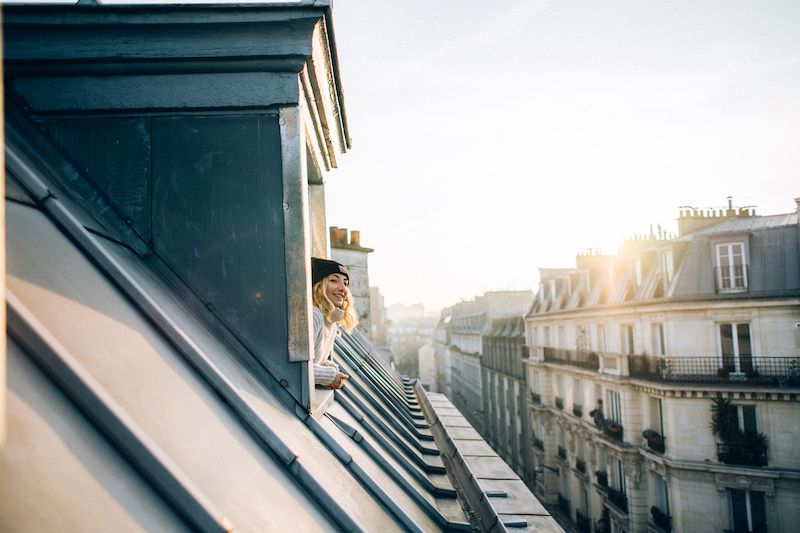
Where To Stay in Paris
With a city as magnificent as Paris, it can be hard to find the perfect hotel at the perfect price. Explore the best hotels and places to stay in these incredible neighborhoods in Paris.
Our Best Guided Tours of Paris
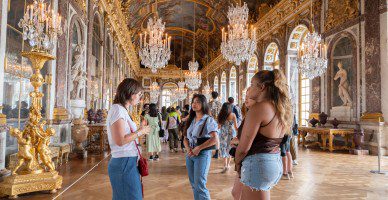
Likely to Sell out
Palace of Versailles and Gardens Tour from Paris
Navigating transportation, dealing with tickets, and waiting in long lines can ruin your day at Versailles. Our half-day small group tour eliminates the hassle entirely. With roundtrip transport from Paris, skip-the-line access, and a friendly guide, you’ll effortlessly explore the palace, discover its highlights, and enjoy free time in the gardens. After your guided experience ends, you’re free to stay in the gardens, visit Trianon and take the train back to Paris at your convenience.
See Prices
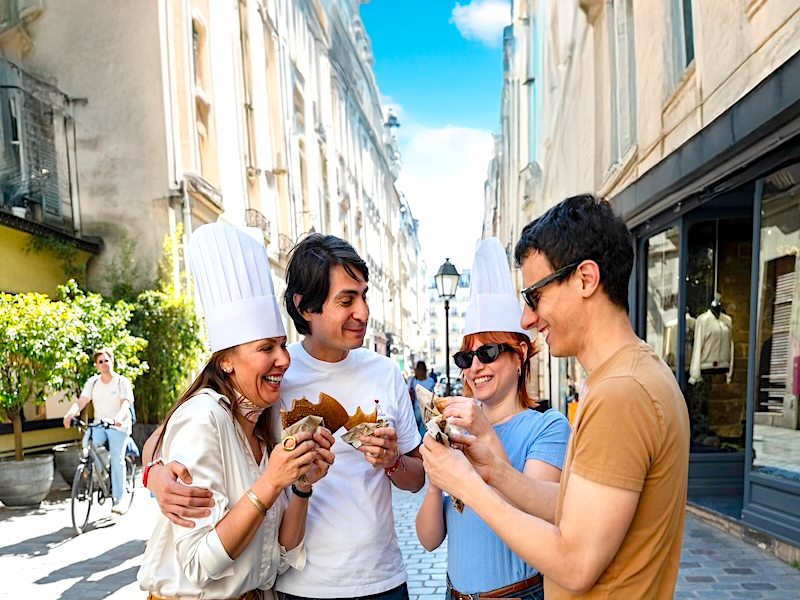
Top Selling
Le Marais Paris Food Tour with Authentic Sit-Down Dinner
With local spots tucked away and confusing menus, most visitors end up overpaying at tourist-trap cafés instead of finding the authentic spots. Our local, friendly guide leads you through Le Marais to five real local businesses for eight tastings and four French drinks, including oysters, Boeuf Bourguignon, falafel, and sweet crêpes. Walk historic streets, hear food stories, and savor Paris like an insider.
